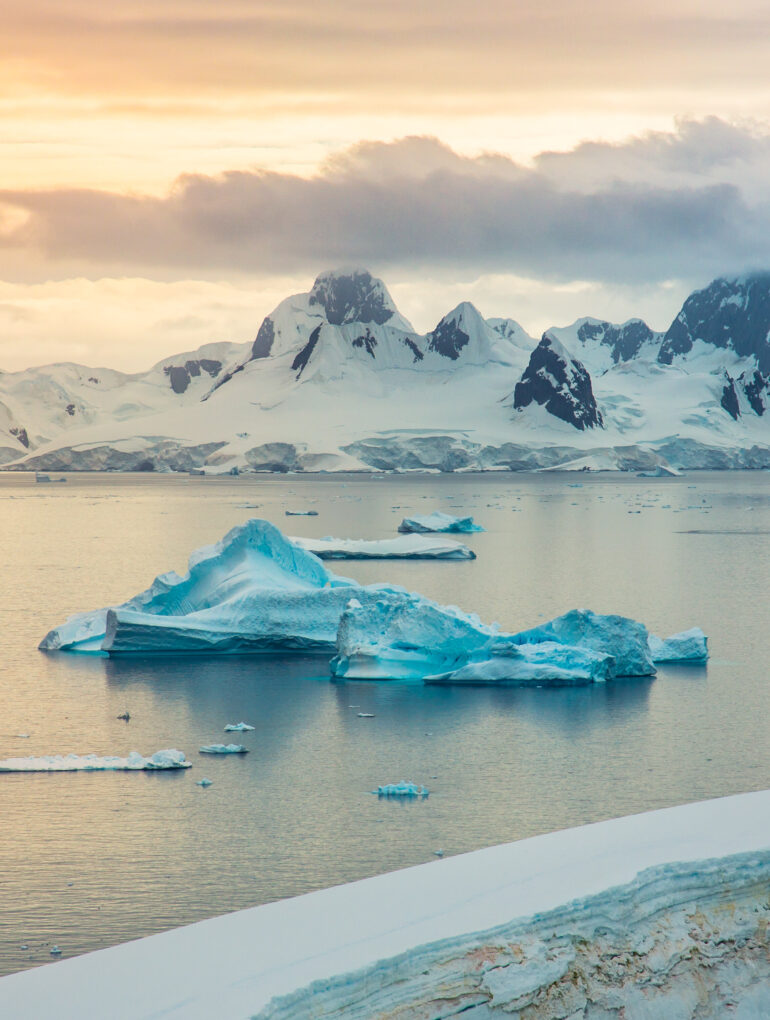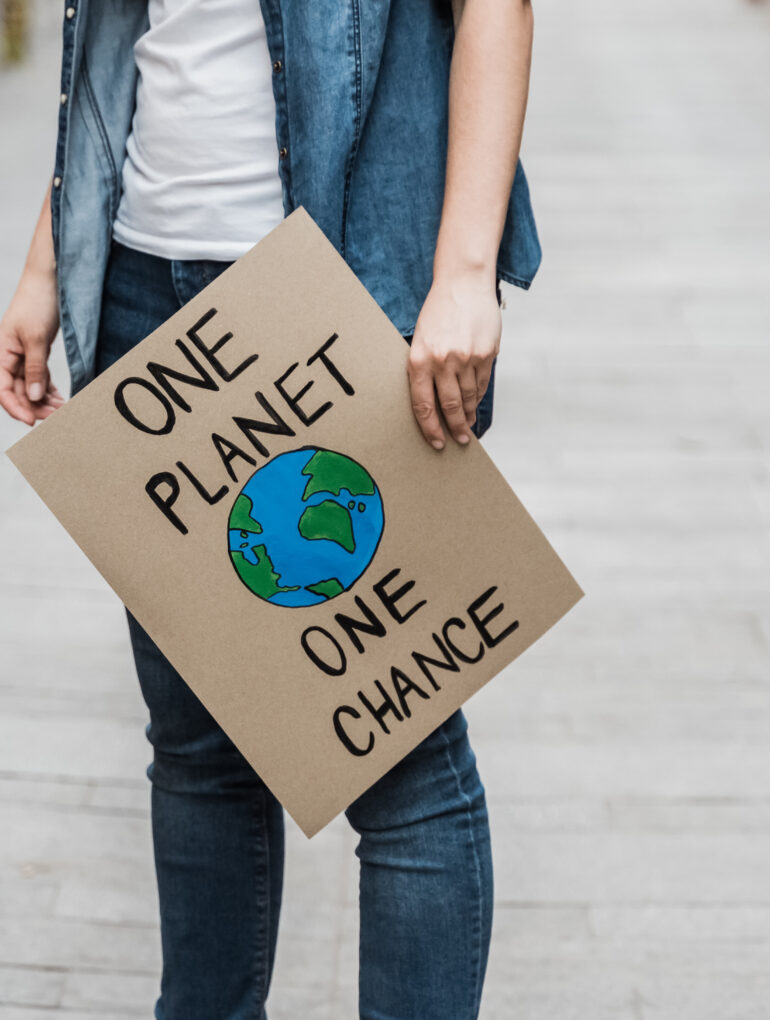The Earth is getting warmer, and it's not just a feeling. The scientific evidence is clear: the average global temperature has been rising over the past century and the trend is expected to continue unless drastic measures are taken. This phenomenon, known as global warming, is caused by increasing levels of greenhouse gases in the atmosphere, which trap heat and cause the planet's temperature to rise.
No, global warming is not a conspiracy theory. The evidence-based concept of global warming supports the idea that the Earth's average temperature is rising due to increasing levels of greenhouse gases in the atmosphere, and is fully supported by overwhelming scientific evidence.
Greenhouse gases such as carbon dioxide (CO2), methane and water vapor, trap heat in Earth's atmosphere, making the planet's surface warmer than it would be without them. The concentration of these gases in the atmosphere is increasing due to human activities such as the burning of fossil fuels, deforestation and agriculture. This increase in greenhouse gases causes the Earth's average temperature to rise, leading to a phenomenon known as global warming.
This is the basic evidence for global warming:
- Rising global average temperatures: Earth's average temperature has been rising over the past century and the trend is expected to continue unless drastic measures are taken to reduce greenhouse gas emissions.
- Melting of the polar ice caps: The polar ice caps, which consist of sea ice and ice sheets on land, are melting at an accelerated rate due to rising temperatures. This causes sea levels to rise, which can flood coastal areas and displace communities.
- Extreme weather events: As the Earth's temperature rises, we witness more frequent and severe extreme weather events such as heat waves, droughts and hurricanes.
- Changes in plant and animal behavior: Many plant and animal species are changing their behavior or moving to new areas in response to a warming climate.
- All this evidence shows that global warming is a real and pressing problem that requires urgent action. This is not a conspiracy theory.

One of the main contributors to global warming is the burning of fossil fuels such as coal, oil and natural gas. These fuels release large amounts when burned carbon dioxide (CO2), and CO2 is the main greenhouse gas. They also contribute to the problem deforestation and agriculture, as trees and plants absorb CO2 and help balance the amount in the atmosphere. As forests are cut down and land is used for agriculture, the ability absorption of CO2 decreases, leading to an increase in atmospheric levels.
The consequences of global warming are far-reaching and serious. As the Earth's temperature rises, we can expect more extreme weather events such as heat waves, droughts and hurricanes. These events can have a devastating impact on communities and ecosystems, causing damage to infrastructure, crops and wildlife. Rising sea levels are another concern as melting polar ice caps cause oceans to expand and flood coastal areas. This can displace communities and destroy habitats.
The good news is that we can do something to reduce the effects of global warming and slow the rate at which the Earth is warming. One of the most effective ways to do this is reducing dependence on fossil fuels and transitioning to clean, renewable energy sources. This can be achieved by using solar collectors, wind turbines and hydroelectric plants that produce electricity without greenhouse gas emissions. Governments and businesses can also play a role by investing in energy efficiency measures and supporting the development of clean technologies.

Individuals can also contribute by adopting a more sustainable lifestyle. This can include simple steps such as using energy-efficient appliances, driving fuel-efficient cars and reducing the amount of meat we eat (as meat production generates large amounts of CO2). Planting trees and supporting reforestation efforts can also help absorb excess CO2 from the atmosphere.
In short, global warming is a real and pressing problem with serious consequences for the planet and its inhabitants. However, by taking action to reduce greenhouse gas emissions and supporting the clean energy transition, we can slow the rate of warming and mitigate its consequences. It is up to all of us to do our part to protect the earth for future generations.
What are we left with? And what must we do to prevent the almost imminent!
In order to prevent the catastrophic events caused by global warming, we must significantly reduce greenhouse gas emissions, especially carbon dioxide (CO2) emissions from burning fossil fuels. The Intergovernmental Panel on Climate Change (IPCC), a group of international scientists studying climate change, has concluded that global reduce CO2 emissions by approximately 45 % by 2030 according to the levels from the year 2010 and reach net zero by about a year 2050, to have the possibility of limiting global warming to 1.5 °C above pre-industrial levels. This is the temperature limit agreed upon by the international community in order to prevent the worst consequences of global warming.
To achieve this reduction in emissions, we need to switch to clean, renewable energy sources and adopt more sustainable practices in all sectors of the economy, including transport, agriculture and industry. This will require the cooperation of governments, businesses and individuals around the world.
It is important to know that the longer we wait for measures to reduce emissions, the more difficult and expensive it will be to avoid catastrophic events. It is therefore vital that we act now to reduce greenhouse gas emissions and slow the rate of global warming.
Concrete steps!
There are many ways that governments, businesses and individuals can help reduce greenhouse gas emissions and slow the rate of global warming. Some examples include:
Governments can implement policies that promote clean energy use and energy efficiency, such as carbon pricing, renewable energy subsidies, and fossil fuel regulations. They can also provide funding for research and development of clean technologies.
Businesses can adopt more sustainable practices such as using renewable energy, reducing energy consumption and reducing waste. They can also invest in clean technologies and support the development of low-carbon infrastructure.
Individuals can reduce their own greenhouse gas emissions by adopting more sustainable practices in their daily lives, such as using energy-efficient appliances, driving fuel-efficient vehicles and reducing meat consumption. They can also support organizations that fight global warming and advocate for policy changes to reduce greenhouse gas emissions.
With these measures, we can help slow the rate of global warming and mitigate the potential impacts of climate change.
It is difficult to say whether we have reached the point of no return in global warming. Earth's climate is a complex system and it is difficult to predict exactly how it will respond to rising levels of greenhouse gases in the atmosphere.
If we do not meet these emissions reduction targets, we are likely to see more extreme weather events, sea level rise and other global warming impacts. It is therefore important that we take immediate action to reduce greenhouse gas emissions and slow down global warming.

A hidden danger that will unexpectedly accelerate the accumulation of greenhouse films
Permafrost, or permanently frozen ground, is indeed a potential hidden danger when it comes to global warming. Permafrost covers about 24 % of land in the Northern Hemisphere and contains large amounts of organic matter such as dead plants and animals that have been frozen for thousands of years.
As the Earth's temperature rises due to global warming, the permafrost begins to melt. As it melts, the organic matter begins to break down, releasing carbon dioxide (CO2) and methane into the atmosphere. These greenhouse gases contribute to warming the earth, leading to a feedback loop in which the warming causes more permafrost to thaw, releasing more greenhouse gases.
It's hard to predict exactly how much CO2 and methane will be released by melting permafrost in the future, but it clearly has the potential to contribute significantly to global warming. In fact, some estimates suggest that permafrost may contain more carbon than has been released by human activities in the past 150 years.
To reduce the potential impact of melting permafrost on global warming, it is important to take action to reduce greenhouse gas emissions and slow the rate of warming. This can be achieved by using clean, renewable energy sources, adopting more sustainable practices and implementing policies to reduce emissions.
10 documentaries about global warming
“An Inconvenient Sequel: From Truth to Power” (2017) – This sequel to the 2006 documentary “An Inconvenient Truth” explores the continuing impact of global warming and efforts to address it. Directed by Bonni Cohen and Jon Shenk. IMDB Rating: 6.6/10.
"Before the Flood" (2016) - Narrated by Leonardo DiCaprio, this documentary examines the causes and effects of global warming and efforts to combat it. Directed by Fisher Stevens. IMDB Rating: 7.3/10.
“Chasing Coral” (2017) – This documentary follows a team of divers, photographers and scientists documenting the devastating impact of climate change on coral reefs around the world. Directed by Jeff Orlowski. IMDB Rating: 7.5/10.
"The Age of Consequences" (2016) – This documentary explores the national security implications of global warming, including the destabilizing effects of extreme weather events and resource scarcity. Directed by Jared P. Scott. IMDB Rating: 7.0/10.
"From Paris to Pittsburgh" (2018) – this documentary examines how cities and communities across the United States are working to combat global warming and adapt to the impacts of climate change. Directed by Sidney Beaumont and Michael Bonfiglio. IMDB Rating: 7.3/10.
“The Great Global Warming Swindle” (2007) – This documentary argues that the scientific consensus on global warming is wrong and that other factors such as solar radiation and cosmic rays are responsible for warming the Earth. Directed by Martin Durkin. IMDB Rating: 7.4/10.
"The 11th Hour" (2007) - Narrated by Leonardo DiCaprio, this documentary examines the causes and effects of global warming and discusses possible solutions to the problem. Directed by Leila Conners Petersen and Nadia Conners. IMDB Rating: 6.6/10.
"Before the Flood" (2016) - Narrated by Leonardo DiCaprio, this documentary examines the causes and effects of global warming and efforts to combat it. Directed by Fisher Stevens. IMDB Rating: 7.3/10.
"This Changes Everything" (2015) – This documentary examines the role of capitalism in driving climate change and discusses alternatives to the current economic system. Directed by Avi Lewis. IMDB Rating: 7.4/10.
"The True Cost" (2015) – This documentary examines the environmental and social impacts of the fashion industry and the true cost of our clothes. Directed by Andrew Morgan. IMDB Rating: 7.5/10.






